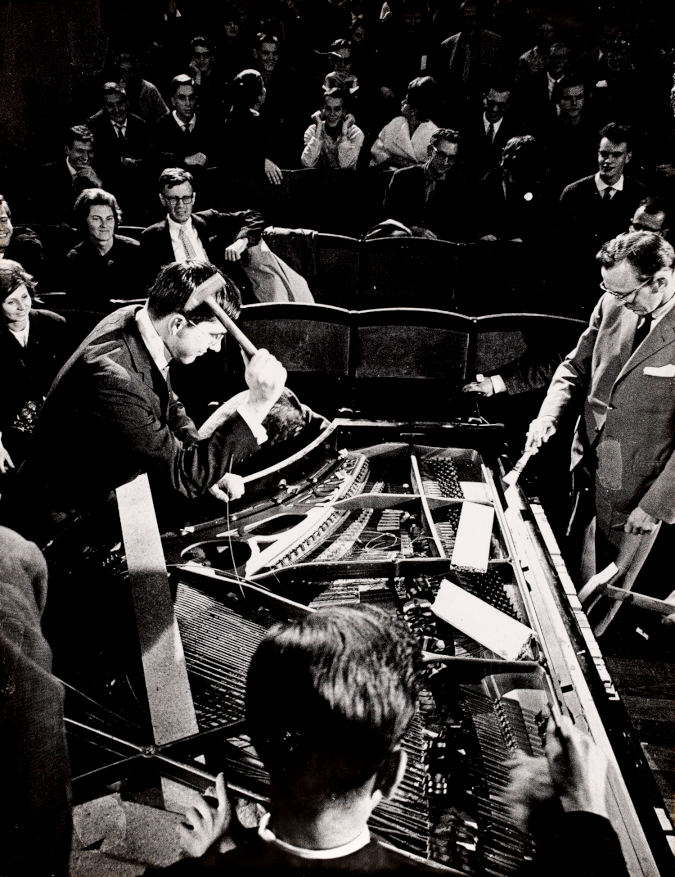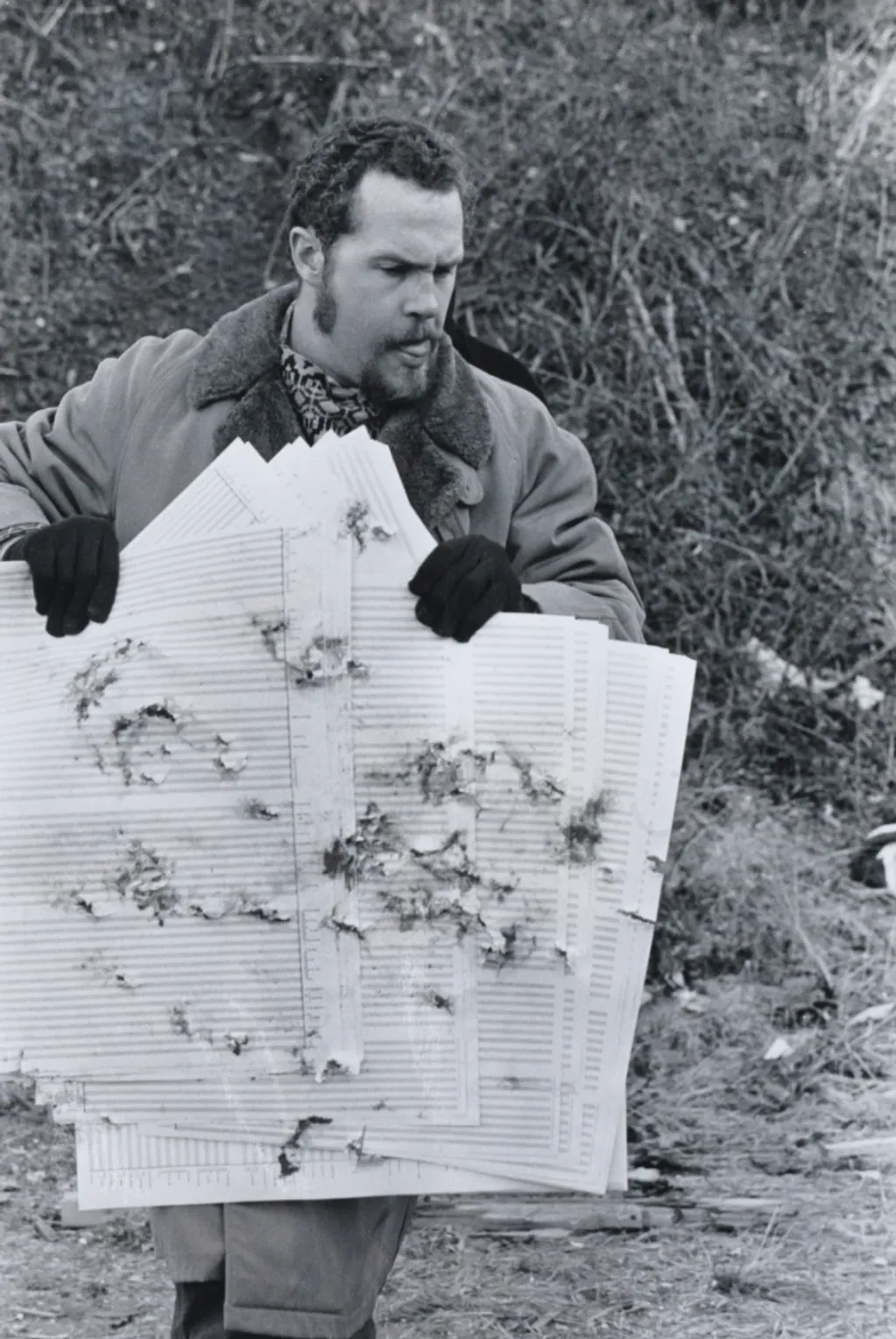Keyboard Player(s):
Pedal Player:
Players on other parts of piano:
-
mute strings with fingers and hand strike or damp (fingers and hand only) - pluck or tap with fingers (flesh and nails) knuckles pluctrum (any material)
- scratch or rub with fingers (flesh, nails) cloth sandpaper sticks glass metal rubber
- drop objects on strings or other parts of piano draw chains or bells across strings
- act on strings external objects (hammers, drum sticks, whips)
- strike soundboard, pins, lid or drag various kinds of objects across them
- introduce preparations into the strings move such objects to different places lay material (silently) on them or remove them
- bring objects producing their own noise in contact with parts of the piano (do not allow them to sound independently)
- act in any way on underside of the piano
To all participants:

